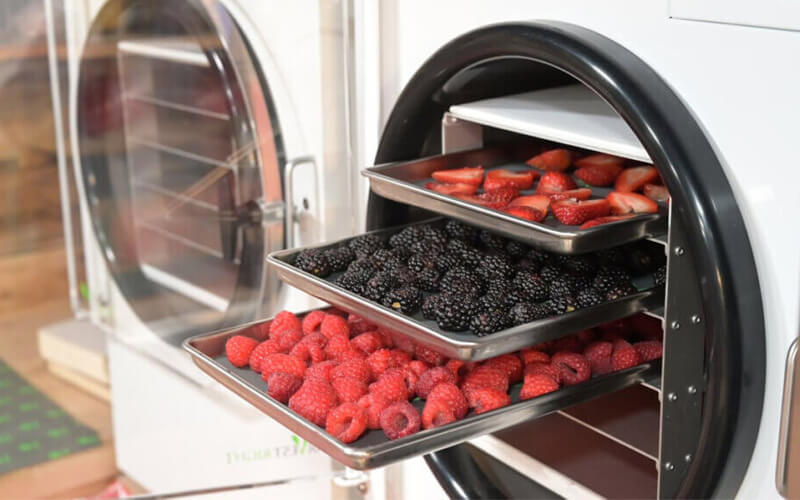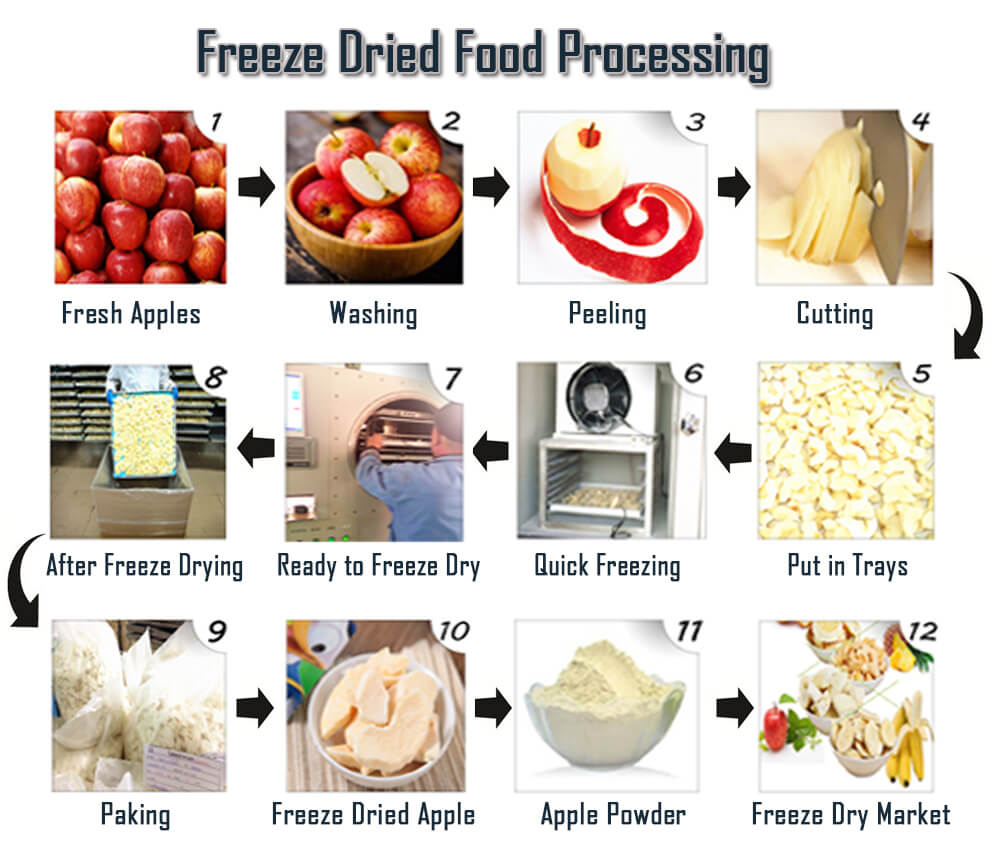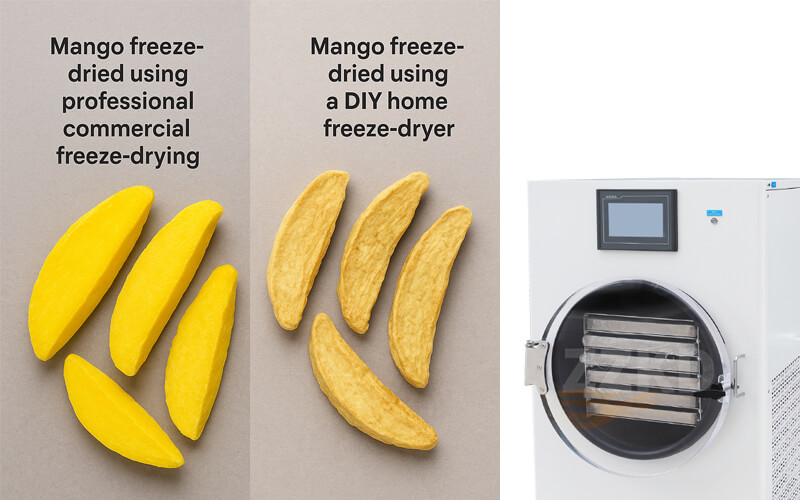Food preservation has been part of human history for thousands of years, from sun-drying fruits to modern vacuum sealing. Two of the most popular methods today are freeze drying and dehydrating. While both remove moisture from food to extend shelf life, they work in very different ways — and the results can vary dramatically.

How Each Method Works
Freeze Drying (also called lyophilization) involves freezing the food and then reducing the surrounding pressure to allow the frozen water to sublimate directly from ice to vapor. This process preserves the food’s structure, flavor, and up to 97% of its nutrients.
Dehydrating uses heat (often between 40°C and 70°C) and airflow to evaporate water from food. While effective, it can cause some nutrient loss, especially heat-sensitive vitamins like Vitamin C.

Key Differences at a Glance
| Feature | Freeze Dryer | Dehydrator |
|---|---|---|
| Moisture Removal | Up to 99% | 80-90% |
| Nutrient Retention | Up to 97% | 60-80% |
| Texture After Rehydration | Almost identical to fresh | Softer, sometimes leathery |
| Shelf Life | Up to 25 years | 1-5 years |
| Best For | Fruits, vegetables, meats, full meals | Fruits, vegetables, herbs |
Which method keeps food tasting more like fresh?
Freeze drying wins here. Because the process avoids high heat, the cell structure and flavor compounds remain intact, so rehydrated food tastes almost like it was never preserved.
Scientific Backing
According to research published in the Journal of Food Science, freeze drying retains significantly higher levels of antioxidants compared to dehydration. In fact, a study from the University of California found that freeze-dried strawberries retained 92% of their vitamin C, while dehydrated ones retained only 55%.
Similarly, the USDA notes that removing nearly all moisture through freeze drying greatly reduces microbial growth, extending shelf life to decades when stored properly.
Is the higher cost of a freeze dryer worth it?
For long-term storage, emergency preparedness, or preserving expensive ingredients, yes. While dehydrators are cheaper upfront, freeze dryers save more food from spoilage and retain more nutrients, which can be valuable for health and cost savings over time.
Cost and Equipment
Dehydrators are relatively inexpensive, with home units starting under $100. Freeze dryers, on the other hand, are a larger investment, often starting around $2,000 for compact models. However, modern small freeze dryers and mini freeze dryer machines have made the technology more accessible to households and small businesses.

Can both methods be used for herbs and spices?
Yes, but freeze drying better preserves aroma and color. Dehydrated herbs may lose some volatile oils, reducing flavor intensity.
Conclusion: Which Should Be Chosen?
If the goal is maximum nutrient retention, long shelf life, and premium quality, a freeze dryer is the clear winner. For quick, budget-friendly drying of fruits, vegetables, and herbs, a dehydrator is sufficient.
For those looking to invest in top-quality preservation equipment, explore our compact freeze dryers and mini freeze dryer options.
